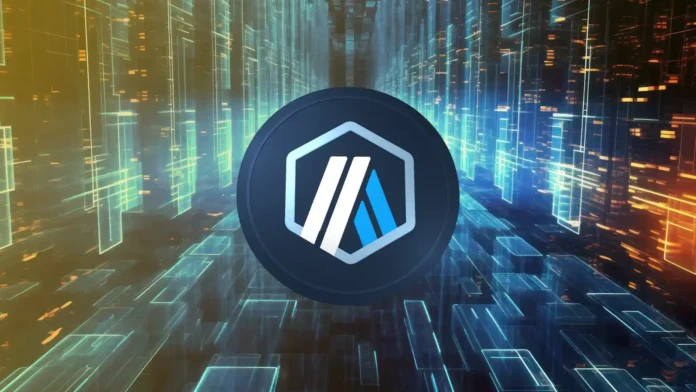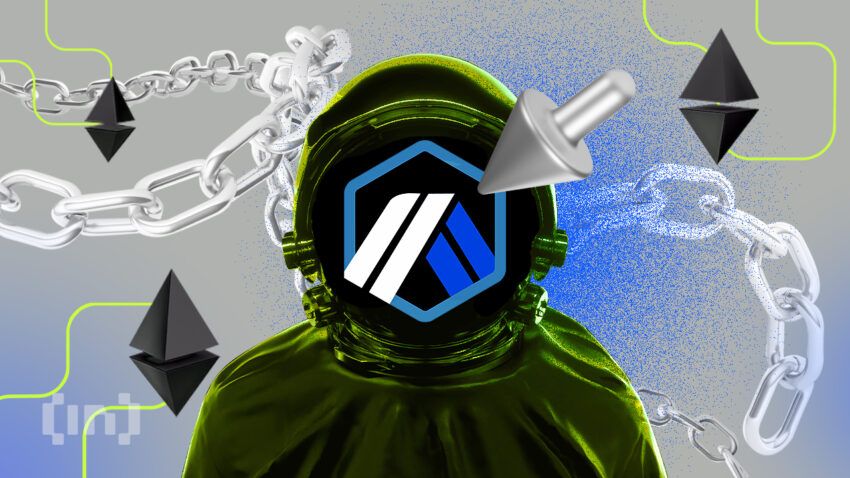In the rapidly evolving landscape of decentralized finance (DeFi), the Arbitrum Bridge stands as a groundbreaking innovation, bridging the gap between the Ethereum mainnet and the Arbitrum ecosystem.
As the demand for scalable and cost-effective blockchain solutions continues to grow, the Arbitrum Bridge has emerged as a game-changer, facilitating seamless asset transfers and unlocking new realms of opportunity for DeFi enthusiasts and developers alike.
The Rise of Arbitrum

Arbitrum is an Ethereum Layer 2 scaling solution that leverages optimistic rollup technology to enhance throughput and reduce transaction costs. By offloading computation from the Ethereum mainnet to a separate layer, Arbitrum provides a faster and more efficient environment for decentralized applications (dApps) to thrive.
While Arbitrum offers a plethora of benefits, including increased scalability and lower gas fees, it introduced a new challenge: the need for a secure and reliable bridge to facilitate the movement of assets between the Ethereum mainnet and the Arbitrum ecosystem. Enter the Arbitrum Bridge, a crucial component that enables users to transfer their Ethereum-based assets seamlessly across these two distinct yet interconnected networks.
Bridging the Divide: How the Arbitrum Bridge Works
The Arbitrum Bridge is a two-way bridge that allows users to move their Ethereum-based assets, such as Ether (ETH) and various ERC-20 tokens, between the Ethereum mainnet and the Arbitrum ecosystem. This bridge leverages a unique technology called “Inbox,” which serves as the entry point for all transactions originating from the Ethereum mainnet.
When a user initiates a transfer from the Ethereum mainnet to Arbitrum, the Arbitrum Bridge first locks the user’s assets on the mainnet, preventing double-spending. Once the assets are locked, the bridge creates a corresponding representation of those assets on the Arbitrum network, effectively enabling their use within the Arbitrum ecosystem.
Conversely, when a user wishes to transfer assets from Arbitrum back to the Ethereum mainnet, the process works in reverse. The user initiates a withdrawal request on the Arbitrum network, and the bridge locks the assets on Arbitrum. After a predetermined challenge period, during which any potential fraud can be detected and addressed, the user’s assets are unlocked and made available on the Ethereum mainnet.
Enhancing Security and Trust

One of the key advantages of the Arbitrum Bridge is its robust security measures. The bridge employs a decentralized network of validators, known as “Arbitrum Sequencers,” to ensure the integrity and correctness of all transactions. These validators independently verify and validate each transaction, providing an additional layer of security and mitigating the risk of potential attacks or fraudulent activities.
Furthermore, the Arbitrum Bridge incorporates a unique fraud-proof mechanism, which allows users to challenge any potentially malicious or incorrect transactions. This mechanism ensures that all transactions are thoroughly scrutinized, fostering trust and transparency within the Arbitrum ecosystem.
Unleashing DeFi Innovation
The Arbitrum Bridge has unlocked a world of possibilities for DeFi developers and enthusiasts alike. By enabling seamless asset transfers between the Ethereum mainnet and Arbitrum, developers can leverage the scalability and cost-efficiency of the Arbitrum network while maintaining access to the vast ecosystem of decentralized applications (dApps) and liquidity pools on the Ethereum mainnet.
This interoperability has paved the way for the creation of innovative DeFi products and services, such as decentralized exchanges (DEXs), lending platforms, and yield farming opportunities. Developers can now build dApps that leverage the best of both worlds, combining the security and decentralization of the Ethereum mainnet with the high throughput and low transaction costs of the Arbitrum network.
Moreover, the Arbitrum Bridge has facilitated the growth of a thriving DeFi ecosystem within the Arbitrum network itself. By enabling the transfer of liquidity from the Ethereum mainnet, Arbitrum has become a fertile ground for the development of new DeFi protocols, attracting a diverse range of users and investors seeking more affordable and efficient alternatives to mainnet transactions.
Fostering Collaboration and Interoperability

The Arbitrum Bridge not only facilitates asset transfers but also serves as a catalyst for collaboration and interoperability within the broader blockchain ecosystem. By providing a secure and reliable bridge between the Ethereum mainnet and Arbitrum, developers can leverage the strengths of both networks, fostering cross-chain communication and enabling the creation of innovative cross-chain applications.
For instance, a decentralized application built on the Ethereum mainnet could seamlessly integrate with a lending protocol on the Arbitrum network, enabling users to access liquidity pools and lending services across multiple blockchain networks. This level of interoperability opens up new avenues for innovation, allowing developers to create novel financial instruments, cross-chain asset management solutions, and other groundbreaking DeFi applications.
The Future of Decentralized Finance

As the DeFi ecosystem continues to evolve and mature, the Arbitrum Bridge stands as a testament to the power of innovation and collaboration. By bridging the gap between the Ethereum mainnet and the Arbitrum ecosystem, this pioneering technology has paved the way for a more accessible, scalable, and cost-effective decentralized finance landscape.
Looking ahead, the Arbitrum Bridge is poised to play a pivotal role in driving the widespread adoption of DeFi solutions. As more users and developers embrace the benefits of Layer 2 scaling solutions like Arbitrum, the demand for efficient and secure asset transfers will only continue to grow.
Furthermore, the Arbitrum Bridge’s impact extends beyond the realm of DeFi. Its principles and underlying technology could potentially be applied to other blockchain ecosystems, fostering greater interoperability and facilitating the seamless transfer of assets across multiple networks.
In the ever-evolving world of decentralized finance, the Arbitrum Bridge stands as a shining example of the power of innovation and collaboration. By enabling seamless asset transfers and unlocking new realms of opportunity, this groundbreaking technology is paving the way for a more inclusive, efficient, and versatile financial ecosystem – one that empowers individuals, fosters innovation, and redefines the very fabric of finance.







